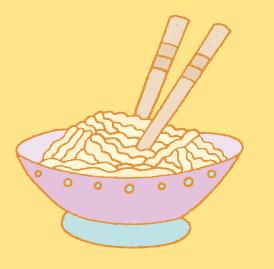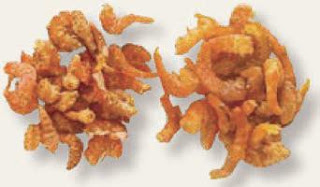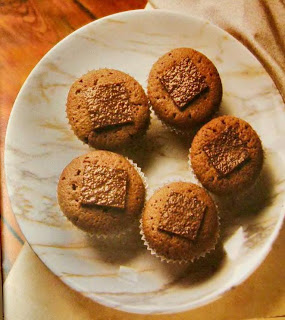It can be frustrating when little problems and annoyances raise their heads, making it seem that breastfeeding isn’t the easiest option. The good news is that almost all problems can be resolved, and after the first few weeks, you’ll find that you settle into a comfortable, pleasurable routine with your new baby.
Q. I find I simply don’t have enough milk at some points during the day. What do you recommend?
A. It can take some time for your milk to become established, and for “supply and demand” to kick in. Continue to allow your baby to suckle, even if there doesn’t seem to be much milk coming out. This will stimulate your body to produce more milk to meet your baby’s demands. It may take a day or so for the milk supply to adjust to your baby’s needs, and the only way to do this is to continue to try to feed her when she is hungry. Make sure that you are relaxed when you feed her. If you are tired and anxious, it might seem as though there is no milk, or not enough. In reality, however, even if your breasts do not feel full to bursting, there will be plenty there for your baby. Take some time to rest, and even retire to bed with your baby for a day or two, to divert your energy toward making milk. Most new moms can use a break, and once you’ve got your supply reestablished, you’ll probably feel much better. Make sure, too, that you are getting enough to eat. You need plenty of energy to produce milk, and an inadequate diet can most definitely affect your milk supply. Eat three good meals a day, with plenty of healthy snacks in between, such as whole-grain toast, fresh fruit, cheese, seeds, and nuts.
 ★ Did You Know ...
★ Did You Know ...
that it’s perfectly normal for your baby to become distracted while feeding? Even hungry babies can lose interest. Try to find a peaceful place to feed and talk to your baby quietly, so that he concentrates on you rather than what is going on around him. If he starts to come off and on, take him off the breast and try again later. He’ll soon realize that feeding time is not playtime!
Q. My nipples are sore and chapped, and latching on is becoming very painful; what can I do?
A. Breastfeeding in the early days can be quite painful as your nipples adjust to regular feeding. It may be cold comfort, but things do improve over time and the best thing you can do is persevere. Make sure that your baby is latching on properly. Her mouth needs to be open wide, with her tongue down and forward, and your nipple should be aimed at the roof of her mouth. When she is properly latched on, she should be drawing in all of the nipple, and some breast tissue into her mouth. If you’re not sure, ask your midwife, doctor, or breastfeeding counselor to watch you feed. After feeds, express a little of the rich, fatty milk and rub it over your nipple to encourage healing. Between feeds, keep your bra and T-shirt off for short periods, to allow the air to get to your nipples. Try a good emollient cream for sore nipples too.
Q. My baby has started refusing my breast; what could be causing this?
A. First of all, make sure that you’re relaxed and in a quiet spot. If you are feeling fraught or anxious, your baby may respond in kind and become fussy or even reject your breast. Make sure that he’s latched on properly, too (see above), as he can become frustrated if he’s working hard to feed, and isn’t getting much milk. You may find it helps to express a little milk first. Sometimes your milk may flow too quickly, causing your baby to choke and to cry after latching on. If this happens, try using a nipple shield, which slows down the flow. Also, it may be possible that you’re eating something that disagrees with your baby.
★ Teething Babies
If your baby is latched on properly, she shouldn’t be able to gnaw or bite, but if she’s teething she may use your breasts for comfort. Remove her from your breast as soon as she’s finished feeding and try rubbing a cold, wet cloth on her gums, or offer her something else to chew on.
Q. My baby often goes for hours between feeds, and my breasts become uncomfortable. What should I do?
A. Some babies do have an amazing capacity to last for hours between feeds. While it may help to express some milk when your breasts are uncomfortable, you don’t want to build up your supply to the extent that you are siphoning off milk and storing it, as well as feeding your baby, because it won’t solve the problem in the long-term. Try offering your breast a little more often, even if he doesn’t seem to be requesting a feed.
Also, some very young babies have not yet developed the strength to wake up and demand to be fed. Sometimes a premature or ill baby is too small and sleepy to cry, instead focusing on conserving energy for growth and recovery. Waking a baby in this situation to offer the breast is a good idea. If your baby isn’t putting on much weight and seems tired and listless, see your doctor or health professional.
Q. My baby still seems hungry after feeds; how do I know that I am producing enough milk?
A. If your baby is growing and putting on weight normally, has at least six wet diapers a day, as well as regular bowel movements, is alert when she is awake, but also sleeps well, she is getting plenty of milk. Sometimes babies have growth spurts that make them hungrier for short periods of time; these often occur around three weeks, six weeks, three months, and six months. You will need to feed her more frequently during these periods to build up your milk supply to meet the new demands. It normally takes only 24 to 48 hours for this to happen, so don’t panic.
Sometimes babies vomit after feeding, leaving them very hungry. If your baby spits up more than a tablespoon or so of milk after feeds, pay a visit to your doctor to establish the cause.
Around the four or five month mark, your baby may seem to need more and more milk and may appear less satisfied after feeds. This may be a sign that she is almost ready to start some solid foods.
In most cases, however, you simply need to feed your growing baby more often until things settle down.
Q. My baby wakes continually throughout the night for feeds, and I’m becoming exhausted; what can I do?
A. First of all, make sure that he is getting plenty of milk during the day, at regular intervals. Babies who develop the habit of snacking tend to wake more frequently than those who have good feeds every three hours or so, since their bodies have not become adjusted to increasing gaps between feeds. If your baby does wake up at night, get him up, change his diaper, and settle him down for a good, long feed. While it does mean that you will have to wake up properly, it’s worth considering—he’ll go for longer the next time and he’ll soon get used to one good feed. If he wakes again, try to settle him without a feed, and he’ll soon realize that waking and calling for you isn’t going to get him another one.
Q. My baby constantly falls asleep while feeding; should I wake her up?
A. Babies often fall asleep at the breast, because they are comfortable and deeply relaxed. It’s perfectly acceptable to encourage this, but only if they are getting a good feed before they drift off. If your baby is getting only a little milk before she falls asleep, she is likely to wake soon, demanding more—a process that can go on all day and night! It’s best to gently nudge her, and switch positions, to encourage her to keep suckling. Sit her up and talk to her, and when she’s awake again, put her back on the breast. My mother tells me that she used to tickle my feet to keep me awake. Also try to avoid “big feeds” when she is very tired.
Q. I have a real problem with leaking; could I be making too much milk?
A. Leaking seems to be a problem that occurs mainly in the first weeks of breastfeeding. Before your supply has been “matched” to your baby’s needs, you may produce more milk than your baby needs, causing your breasts to leak and even spurt milk. Try feeding your baby before your breasts become too full. Even if he takes only a little, it can help to ease the flow. Over time, your breasts will respond to your baby’s needs, and become less full. If your baby is ill, or if he has slept longer than usual, you may experience very full, painful, leaking breasts. Try expressing a little milk, and put it in the freezer for a later date. Sometimes breasts leak when your let-down reflex suddenly and unexpectedly kicks in. You may hear your baby—or even another baby—cry, which gets things started. Try crossing your arms across your breasts and hold them firmly for a few minutes, to stop the flow, and keep a supply of breast pads on hand.
Q. I don’t enjoy breastfeeding at all and want to give it up, but I feel incredibly guilty. Does it matter that much?
A. Breastfeeding should be a pleasurable experience for both mom and baby, and if you don’t enjoy it, it can become negative for you both. Breastfeeding for even a short time gives your baby the best start in life, and you should feel proud that you have managed to give her that. Sometimes it simply doesn’t work out, and there are a wide range of good formulas on the market that will ensure your baby gets exactly what she needs. Try not to feel guilty—you can make bottle-feeding sessions warm, nurturing, and positive.
Q. I would like to stop breastfeeding, but my baby refuses a bottle. What do you recommend?
A. First of all, experiment with some different bottle teats. Some of the flatter ones are more similar to the nipple, and he may find this less offensive. Start by offering him expressed milk in a bottle, which he’ll find familiar and less distressing. Try dropping one feed at a time, and offering the bottle when you know he’ll be hungry—perhaps first thing in the morning. It can sometimes help to have someone else offer the bottle, because if he’s near to you, and can smell your milk, he may hold out for the real thing. Make sure the bottle-feeding experience is cozy and nurturing. It can be difficult, but persevere, and he’ll get there. If he’s hungry, he’ll eventually give in, and one or two successful bottle feeds will make things much easier in future.
★ Breastfeeding To Sleep
Many babies seek the breast when they are sleepy because it’s comforting and familiar. There is nothing wrong with breastfeeding a baby to sleep. You don’t want her to become dependent on you feeding her to fall asleep, though. Begin the transition to settling her without milk when you’re both ready.
This recipe was published in 'First Meals & More Your Questions Answered With 50 all-new “recipes to the rescue” by Annabel Karmel - p22 to p25'.
 This springtime stunner is gorgeous to behold—and very enjoyable to eat. Thinly sliced strawberries are laid in a concentric pattern atop a large round of pastry dough. Although the galette needs no embellishment, basil-infused cream lends a sophisticated touch to each slice.
This springtime stunner is gorgeous to behold—and very enjoyable to eat. Thinly sliced strawberries are laid in a concentric pattern atop a large round of pastry dough. Although the galette needs no embellishment, basil-infused cream lends a sophisticated touch to each slice.













.JPG)
.JPG)
.JPG)























.JPG)








